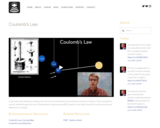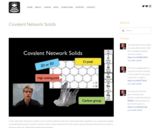
Why people set up corporations
- Subject:
- Business and Marketing Education
- Finance
- Material Type:
- Lesson
- Provider:
- Khan Academy
- Author:
- CK-12 Foundation
- Sal Khan
- Date Added:
- 09/22/2013

Why people set up corporations

Correcting the time difference calculation by taking into account that there is no year 0

Correction to Sodium and Potassium Pump Video

Correction to "Total Final Velocity for Projectile" Video

The video resource "Correlation Doesn’t Equal Causation: Crash Course Statistics #8" is included in the "Statistics" course from the resources series of "Crash Course". Crash Course is a educational video series from John and Hank Green.

Understanding why correlation does not imply causality (even though many in the press and some researchers often imply otherwise)

The resource"Correlative conjunctions and starting sentences" is a tutorial included in the "Parts of speech: the preposition and the conjunction" topic in the subject "Grammar" as listed in the Khan Academy series.

This video is from the Khan Academy subject of Math on the topic of Trigonometry and precalculus and it covers Cosine addition identity example.

Cosmic Background Radiation

Cosmic Background Radiation 2 - Redshift of the Cosmic Background Radiation

Cosmological Time Scale 1

Cosmological Time Scale 2

How an oil shock can slow the economy while causing inflation

The resource "Coulomb's Law" is included in the "Electrical engineering" course from Khan Academy. This resource is one of the sub-topics in the "Electrostatics" topic area.

In this video Paul Andersen explains how we can use Coulomb's law to predict the structure of atoms. These predictions can be verified through the use of Photoelectron Spectroscopy (PES). Electron's are help around the nucleus because of differences in charge.

There can be tens of thousands of cells in one milliliter of culture medium. So how are cells counted? The process requires diluting the cell culture, dying the cells, and loading the cells into a hemocytometer. A hemocytometer is a modified microscope slide with two chambers. Each chamber is divided into 9 squares. There are specific guidelines for counting cells within the squares. In this video, we'll demonstrate the process of counting cells using a hemocytometer. We'll also work through some of the typical calculations that accompany cell counting. Our hope is that after viewing this video, you will feel more confident and be better prepared to try counting cells in a hands-on lab experience.

Paul Andersen explains the importance role of coupled reactions in biology. He starts by explaining how the power of a river can be harnessed by a water mill to grind grains. He describes the importance of ATP and how it is used within living organisms. He highlights many of the coupled reactions between the Sun and your thumb.

In this video Paul Andersen explains how covalent bonds form between atoms that are sharing electrons. Atoms that have the same electronegativity create nonpolar covalent bonds. The bond energy and bond length can be determined by graphing the potential energy versus the distance between atoms. Atoms that share electrons unequally form nonpolar covalent bonds.

In this video Paul Andersen explains how covalent network solids form elementally (like graphite) or by combining multiple nonmetals (like quartz). Covalent network solids contain elements from the carbon group because they have four valence electrons and can create three-dimensional shapes.

Covariance, Variance and the Slope of the Regression Line